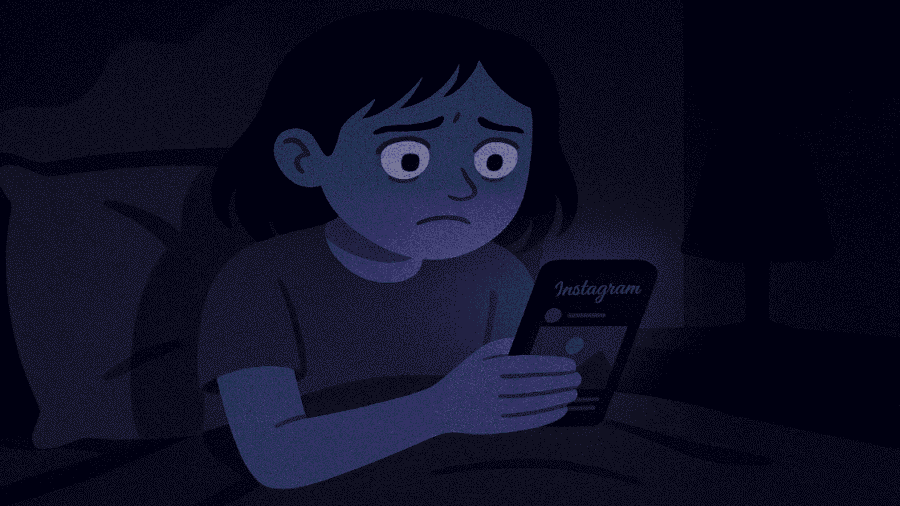In classrooms, bedrooms, and social media feeds, millions of teenagers are battling something many adults fail to see — anxiety disorders. Unlike fleeting nervousness before an exam or the butterflies before a performance, these anxiety disorders are intense, persistent, and often debilitating.
Mental health professionals and researchers have sounded the alarm. The National Institute of Mental Health (NIMH) reports that 32 percent of adolescents aged 13 to 18 live with some form of anxiety disorder, and over 8 percent experience severe impairment in their daily lives (NIMH, 2023).
This rise is not simply due to better diagnosis or awareness. There are profound societal shifts contributing to the growing mental health crisis among youth. In this blog, we will explore the roots, symptoms, consequences, and solutions for this silent epidemic affecting teens worldwide.
What Is an Anxiety Disorder?
An anxiety disorder is not just excessive worrying — it is a clinically recognized mental health condition that causes intense, prolonged fear, dread, or uneasiness, often without an obvious trigger.
There are several types of anxiety disorders commonly diagnosed in adolescents:
- Generalized Anxiety Disorder (GAD): Persistent and excessive worry about everyday matters, such as school, health, or relationships.
- Social Anxiety Disorder (SAD): An intense fear of social or performance situations where embarrassment may occur.
- Panic Disorder: Recurrent panic attacks, characterized by sudden episodes of intense fear accompanied by physical symptoms like heart palpitations, shortness of breath, and dizziness.
- Separation Anxiety Disorder: Extreme fear about being away from caregivers, common in younger teens.
- Specific Phobias: Irrational fears related to specific objects or situations (e.g., heights, needles, animals).
Anxiety in teens often coexists with other mental health conditions such as depression, ADHD, or eating disorders, making early diagnosis and intervention even more crucial.
Why Are Teens More Anxious Today?
1. Digital Media and Social Comparison
Social media platforms such as Instagram, Snapchat, and TikTok have dramatically changed the social landscape for teens. While these platforms can offer connection and entertainment, they also promote unrealistic standards of beauty, lifestyle, and success.
A study published in JAMA Pediatrics in 2019 found a significant link between increased screen time and symptoms of anxiety and depression in adolescents. Constant exposure to curated images and “likes” fosters social comparison and fear of missing out (FOMO), both of which contribute to anxiety.
2. Academic Pressure and Perfectionism
Today’s teens are burdened with immense academic expectations. The competitive nature of college admissions, scholarship opportunities, and standardized testing places excessive pressure on adolescents to perform. Many students feel as though they must be perfect to succeed, leading to chronic stress and anxiety.
Even high-performing students often suffer in silence, driven by internalized pressure and fear of failure.
3. Global Crises and Existential Threats
Teens today are more aware than ever of the problems plaguing the world. From climate change, to school shootings, economic uncertainty, political unrest, and global pandemics — they are growing up in an age of heightened instability.
A global study published in The Lancet revealed that over 59 percent of young people aged 16–25 feel extremely or very worried about climate change, and over 45 percent said their feelings negatively affected their daily lives.
4. Family Dysfunction and Trauma
Parental conflict, divorce, financial instability, or exposure to trauma such as abuse or neglect are major contributors to childhood anxiety. The family environment plays a pivotal role in a teen’s emotional development.
Symptoms: How Anxiety Manifests in Teens
Teenagers may not always have the language or willingness to express that they feel anxious. Instead, anxiety often manifests through physical and behavioral symptoms, including:
- Chronic headaches or stomachaches
- Sleep disturbances or nightmares
- Avoidance of school, friends, or public spaces
- Difficulty concentrating
- Restlessness or irritability
- Excessive reassurance seeking
- Decline in academic performance
Many of these symptoms are mistaken for typical adolescent behavior, which can delay proper diagnosis and treatment.
The Long-Term Impact of Untreated Anxiety
When left untreated, anxiety disorders in teens can result in:
- Chronic mental health issues: Increased risk of depression, substance use disorders, and suicidal ideation.
- Academic disruption: Skipped classes, school refusal, and dropping out.
- Social isolation: Difficulty forming or maintaining friendships.
- Physical health deterioration: Chronic stress can lead to digestive issues, heart problems, and a weakened immune system.
According to the Centers for Disease Control and Prevention (CDC), suicide is the second leading cause of death among individuals aged 10–24 in the United States (CDC, 2023).
Effective Treatment and Prevention
The silver lining is that anxiety disorders are highly treatable. With early intervention, teens can manage and even overcome anxiety.
1. Therapy
- Cognitive Behavioral Therapy (CBT) is the most evidence-based treatment for teen anxiety. It helps individuals challenge negative thought patterns and develop healthier coping mechanisms.
- Exposure therapy, a branch of CBT, gradually exposes individuals to feared situations, reducing avoidance behavior over time.
- Mindfulness and Acceptance-Based Therapies can improve emotional regulation and reduce rumination.
2. Medication
Selective serotonin reuptake inhibitors (SSRIs) are commonly prescribed for severe anxiety. These medications are effective but should only be used under the supervision of a licensed psychiatrist and with parental involvement.
3. Lifestyle Interventions
Healthy lifestyle habits are critical in managing anxiety:
- Regular physical activity
- Adequate sleep (8–10 hours per night for teens)
- Nutritious diet
- Limited screen time, especially before bed
- Mindfulness practices such as meditation, yoga, or journaling
4. Supportive Relationships
Teens need adults who listen without judgment. Whether it is a parent, teacher, coach, or therapist, supportive relationships can buffer the effects of stress and promote resilience.
5. School-Based Programs
Schools can play a major role by implementing:
- Mental health awareness workshops
- Peer support groups
- Access to school counselors and psychologists
- Anti-bullying and stress reduction initiatives
Building a Better Future for Anxious Teens
Teenagers today are navigating a world filled with challenges that are often invisible to adults. It is no longer acceptable to dismiss anxiety as mere “growing pains” or shyness. The statistics are clear, and the emotional toll is real.
As a society, we must work together — parents, educators, clinicians, policymakers, and teens themselves — to destigmatize mental health, promote early intervention, and build environments that nurture emotional well-being.
The earlier we recognize and support struggling teens, the brighter and healthier their futures will be.



[…] our article, The Rising Epidemic of Anxiety Disorders in Teens, we break down the warning signs of anxiety and how they often begin unnoticed. When Gen Z speaks […]
[…] The Rising Epidemic of Anxiety Disorders in Teens, PsycheShare explores how unmanaged stress and overcommitment in adolescence create lasting damage […]